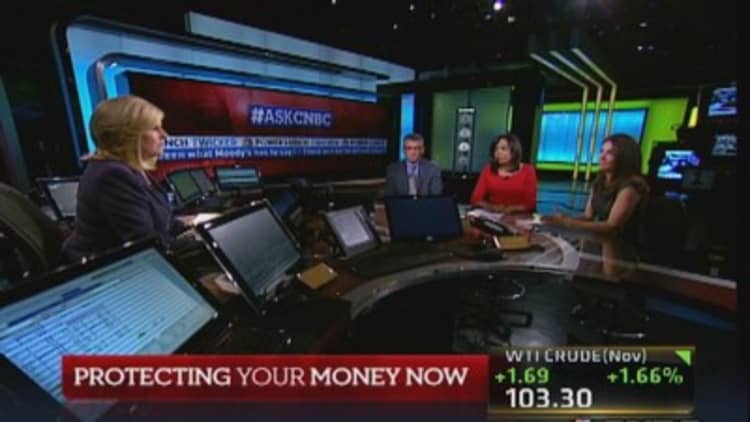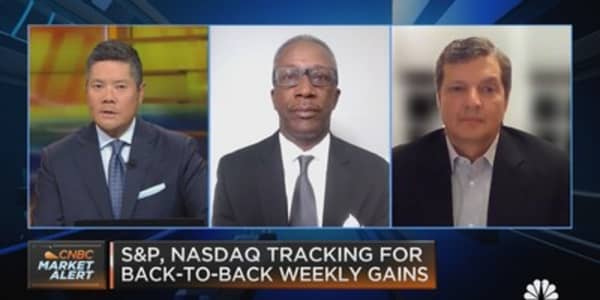Certified financial planner Geri Pell cringes when she recalls once having a man land in her office with $250,000 check in hand and asking where he should invest it. The problem was that he had withdrawn the money from his 401(k) plan upon leaving his job.
"Luckily, he came to me before he faced [tax penalties]," said Pell, CEO of Pell Wealth Partners.
Confusion over 401(k) plans—whether when switching jobs or facing decisions about investment options—is common.
A survey recently released by Charles Schwab found that 52 percent of workers are confused about their 401(k) options. And 57 percent wish making investment decisions were easier.
Richard Salmen, a senior adviser with GTrust Financial Partners, has seen the withdrawal mistake most often when less than $20,000 is parked in a 401(k).
"Some people see it as an opportunity to pay down credit card bills or other debt," Salmen said. "Unfortunately, it happens a lot."
(Read more: Can't figure your 401(k) plan? You're not alone)
Workers need to remember that 100 percent of any such withdrawal is taxed as regular income. If they are under age 59½, they will be socked with a 10 percent early withdrawal penalty from the Internal Revenue Service.

Wiser choices exist. If someone has more than $5,000 in a 401(k), an employer cannot boot you from the plan when you leave your job. So, the money can stay there.
Alternatively, it can be moved to a rollover individual retirement account or to your new employer's 401(k) plan. No matter what the individual decides, financial advisors say it is important to start by contacting the human resources department at the company where the 401(k) funds currently are parked.
If the person decides to roll over the nest egg to a new 401(k) plan, be prepared.
Once the paperwork is filled out, the employee receives a check from the existing 401(k) plan and must fork the check over to the new employer's plan trustee. In some cases, the headaches may only be starting.
Whether someone is enrolling in a new 401(k) or evaluating investment options during the company's open enrollment for an existing plan, the choices can seem daunting.
(Read more: Are you making the big 401(k) mistake?)
But given that 61 percent of people, according to the Schwab survey, view their 401(k) as their only or largest source of retirement savings, dedicating the proper time to making sense of the various investment choices is worthwhile.
The good news is that employers increasingly are trying to make decisions easier for employees. One way is through target-date funds, also known as age-based funds. These funds offer an investment mix that automatically becomes less risky as the participant nears retirement age.
The latest data from the nonpartisan Employee Benefit Research Institute in Washington shows that 72 percent of plans now include target-date funds in their investment options.
Such a fund is "sort of like an autopilot asset-management plan," Salmen said.
Ed Gjersten II, a certified financial planner with Mack Investment Securities, added that "if you're in your 20s, 30s or 40s, that's when target-date funds are really helpful."
That's because the time horizon for needing to tap the money is longer.
The tricky thing, say advisors, is ensuring that an investor selects an accurate target date and—importantly—continue to pay attention to it and its underlying investments.
When the stock market imploded in 2008, some people in target-date funds watched their money—whether held in retirement accounts or college-savings plans—dwindle to alarming amounts.
The solution is to get professional advice.
(Read more: Your 401(k) and how to catch up)
According to the Schwab study, 79 percent of 401(k) participants have access to advice provided through their companies, be it online, in person or on the phone. And, of course, there's an industry chock-full of pros ready to take your financial concerns seriously.
Pell said her experience shows that a decade can pass before some workers actually will examine the investments they own through their 401(k) plans.
"Most people view it as the same thing as cleaning out a toilet bowl," she said. "They just don't want to deal with it."
For his part, Roger Wohlner, a certified financial planner with Asset Strategy Consultants, advises that individuals evaluate their 401(k) investments at least yearly in conjunction with all other investments.
Wohlner also said that, in general, workers should contribute as much as they can to their 401(k) plans, especially to capture any matching contribution made by their employer.
IRS guidelines dictate that the limit on employee elective-deferral contributions for 401(k) plans is $17,500 for 2013; so-called "catch-up contributions" for participants age 50 and older allow an extra $5,500 for this year. Both limits potentially could be increased for 2014.
(Read more: Tips on managing your 401(k) plan)
The most important thing, however, is to make sure you actually participate in an available 401(k). According to the Bureau of Labor Statistics, the participation rate in employer-provided 401(k) plans hovers at around 49 percent.
"For most of us, it's really hard to save enough for retirement and it's easy not to," Wohlner said. "So, making contributions to [a] 401(k) is a very easy way to save."
—By Sarah O'Brien Special to CNBC.com.




